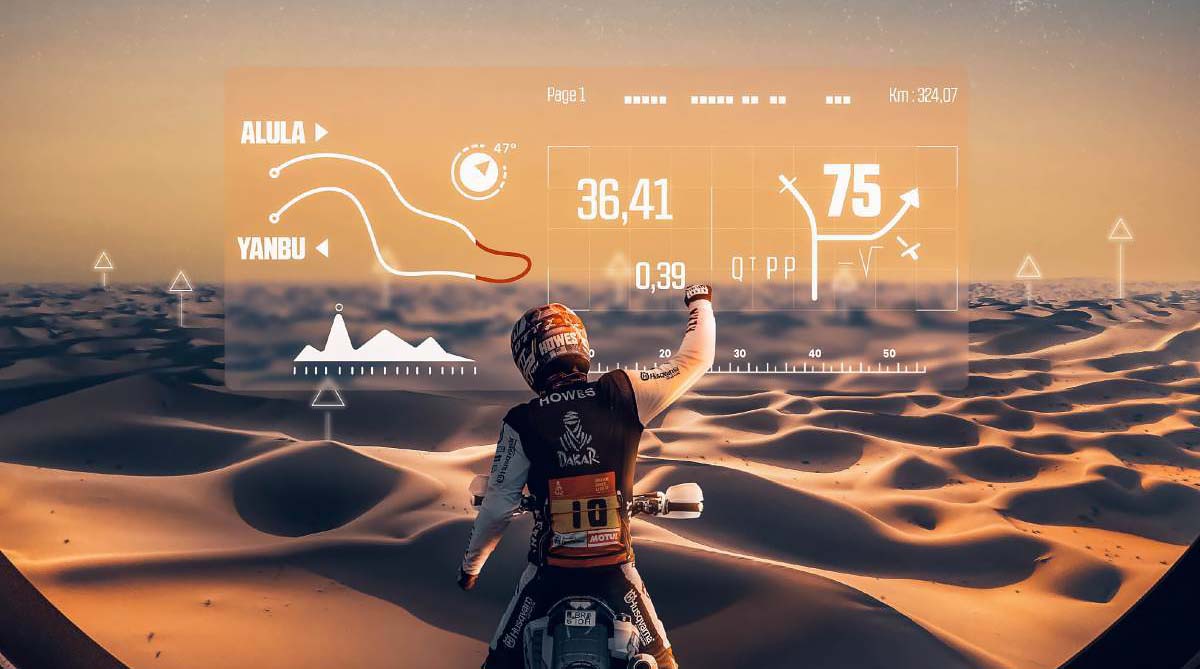The Dakar Rally can surely be called the most famous and “patriotic” in Russia, in which the whole country, and not just motorsport fans, is proud of its success. It is in this marathon for survival that KamAZ trucks show the whole world the power and reliability of engines, forcing them to respect the domestic auto industry. Russian trucks literally “do not notice” their rivals, taking the “gold” of the podium almost every year.
Due to Russia's invasion to Ukraine, KAMAZ (like the Belarusian MAZ) is suspended from participation in Dakar race for an indefinite period. Whether KAMAZ will be able to recover from such a disgrace is unknown, especially since Russia hosts its own races (including the international Silk Way Rally). Anyway or another, the KAMAZ-Master team left its mark on the history of Dakar, which is an indisputable fact.
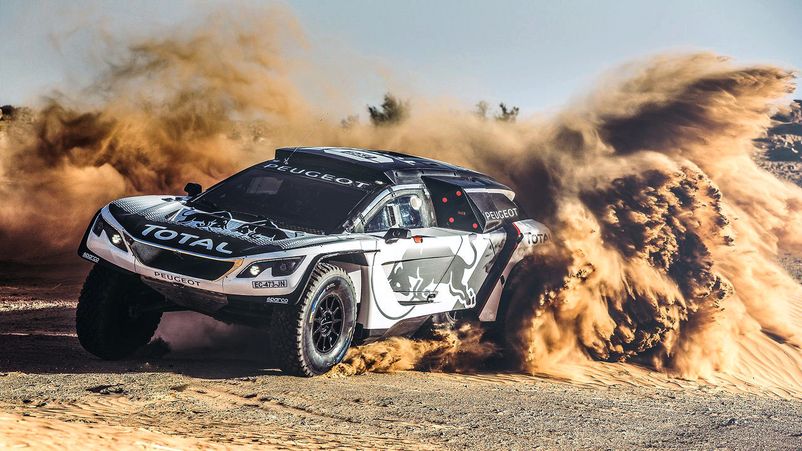
HISTORY OF THE DAKAR RALLY
The victory is especially prestigious because of the many thousands of kilometers of the race and its conditions, when roads change directions, sand dunes become mud puddles, and the sweltering sun brings torrential downpours. The ideological inspirer and organizer of the "Paris Dakar Rally" was the Frenchman Thierry Sabin, who almost died during the 1977 Nice-Abidjan marathon. A motorcycle racer lost in the desert was accidentally discovered by the Tuareg tribe three days later. This prompted him to work out the route of a new rally across the African continent - dangerous and difficult to pass, with a minimum number of roads and a maximum number of natural obstacles.
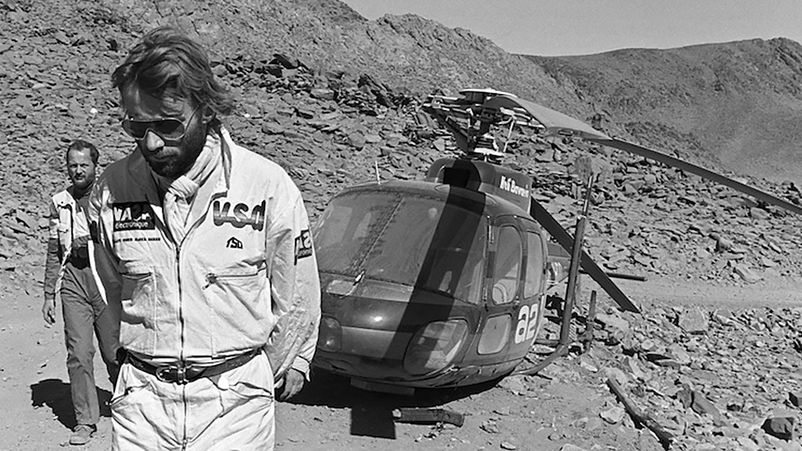
The debut season of the Paris-Dakar took place in 1978, and the start of the race took place on December 26 in Paris, from Trocadero Square. The finish point chosen was Dakar, the capital of Senegal in West Africa, which the pilots reached three weeks later, passing through Algiers, Mali, Niger and Burkina Faso. 182 racers reached the starting line (90 on motorcycles, 80 on cars and 12 on trucks), but only 74 reached the finish line. Drivers covered about 10 thousand kilometers, more than 3 were special stages.
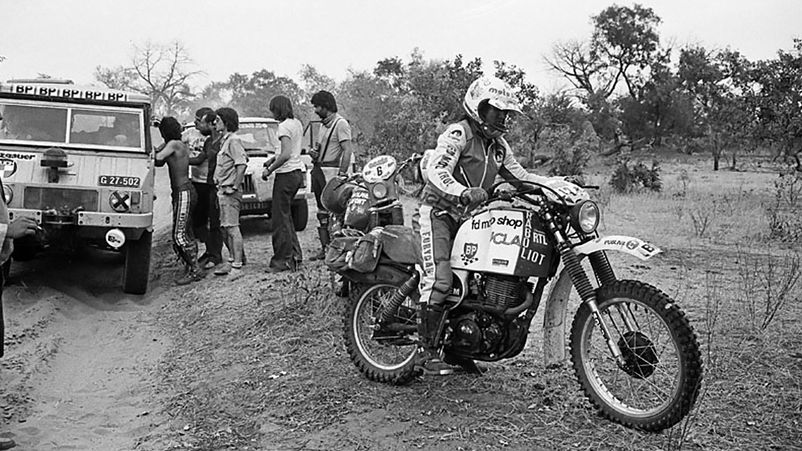
The division of equipment into classes of auto, motorcycle and cargo occurred from the second (January 1980) year, so the award podium in 1979 turned out to be one. It went entirely to the motorcycle racers, and the “gold” and the title of the first Dakar champion (originally used as a common abbreviation for the rally-raid) were won by the Frenchman Cyril Neve, who rode the Yamaha XT500. His compatriots, “motorists” on the Range Rover V8, also distinguished themselves, winning the victory for the only time in the history of the tournament with a trio of a pilot, navigator and mechanic. In the future, the functions of the latter were taken over by other crew members. The "cargo" category received an official winner in the 80th. It was the Algerian team on the Sonacome, a truck of the Algerian automonopoly, created as a branch of the French Berliet.
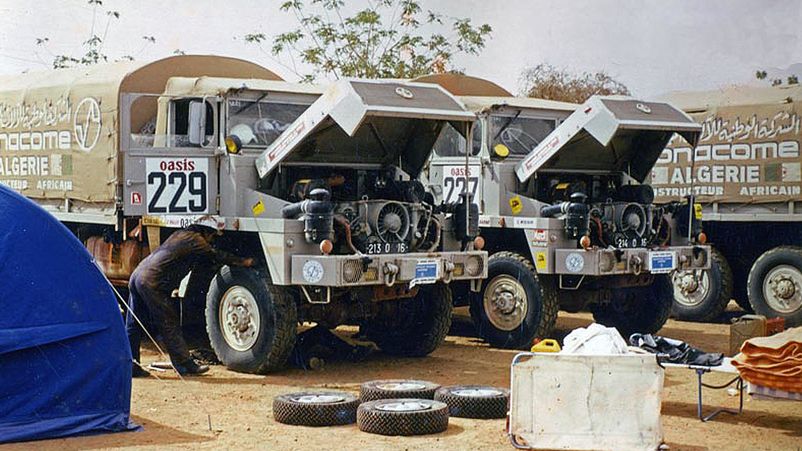
The mass failures of the participants in the debut rally, which turned out to be a “survival marathon”, did not embarrass the auto world, gathering even more people who wanted to try their hand next year. Traditionally, the race began on January days in Paris and ended in Dakar, but since 1995 (due to public protests about the massive accumulation of equipment that creates a transport collapse in the city), the French capital has given only two starts (1998 and 2001). It was replaced by the Spanish Granada (1995, 1996, 1999) and Barcelona (2005), Arras (2002), Marseille (2003) and Clermont-Ferrand (2004) from France, the Portuguese Lisbon (2006, 2007) and even Dakar itself (1997 and 2000).
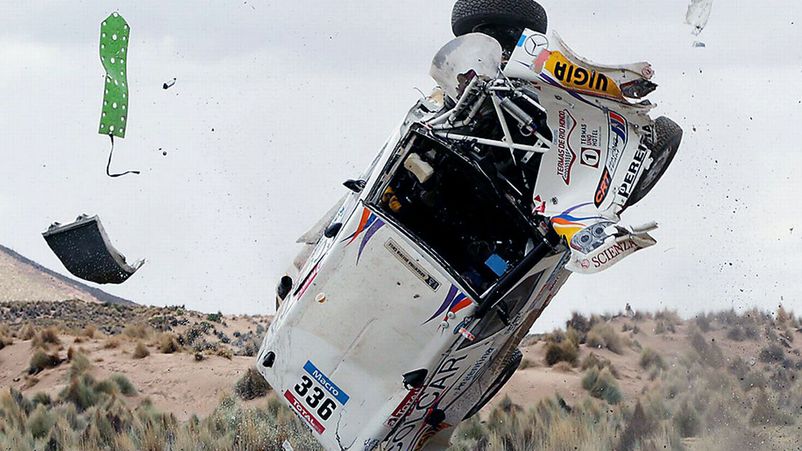
The finish line has also been moved several times. In 1992, the Paris-Dakar crossed the whole of Africa, finishing in South Africa, in Cape Town, not far from the Cape of Good Hope, the extreme southwestern point of the African continent. In 2000, drivers were driving from Dakar to Egyptian Cairo, and in 2003 from Marseille to Sharm el-Sheikh (Egypt). In 1994, the race was "circled", starting and ending in Paris, in 1997 doing the same with the capital of Senegal. In total, twenty nine countries accepted the stages for the entire time of the event.
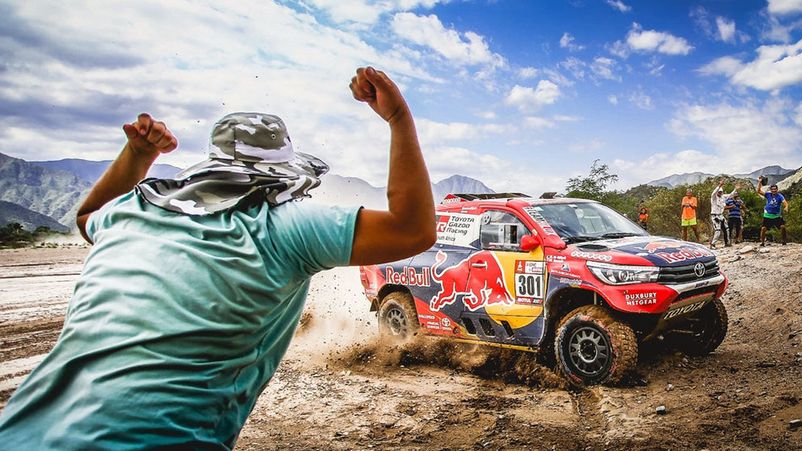
The last season of the "classic", West African "Paris-Dakar" was 2007. The threats of terrorists from Al-Qaeda, who demanded the cancellation of the race and killed four French citizens in Mauritania in December of that year, were taken seriously by the organizers. They decided to move the competition to Latin America until the “normalization of the situation” (in fact, for an indefinite period, given the activity of various terrorist groups), refusing to hold the 2008 rally.
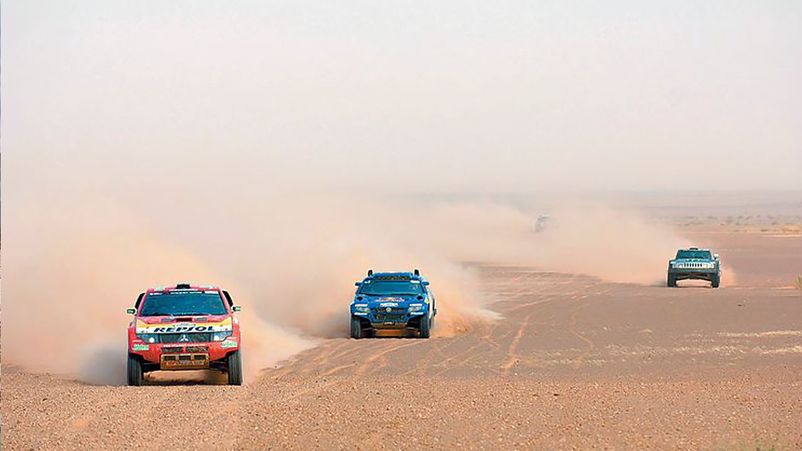
Since 2009, the rally-raid has been taking place in South America, having first "mastered" Argentina and Chile, expanding the geography of the event to Peru in 2013 and, in 2017, Paraguay and Bolivia. At the same time, the name remained still recognizable - the Dakar rally, having lost its "European" part. The route remaining in Africa uses another "off-road" competition, the Africa Eco Race.
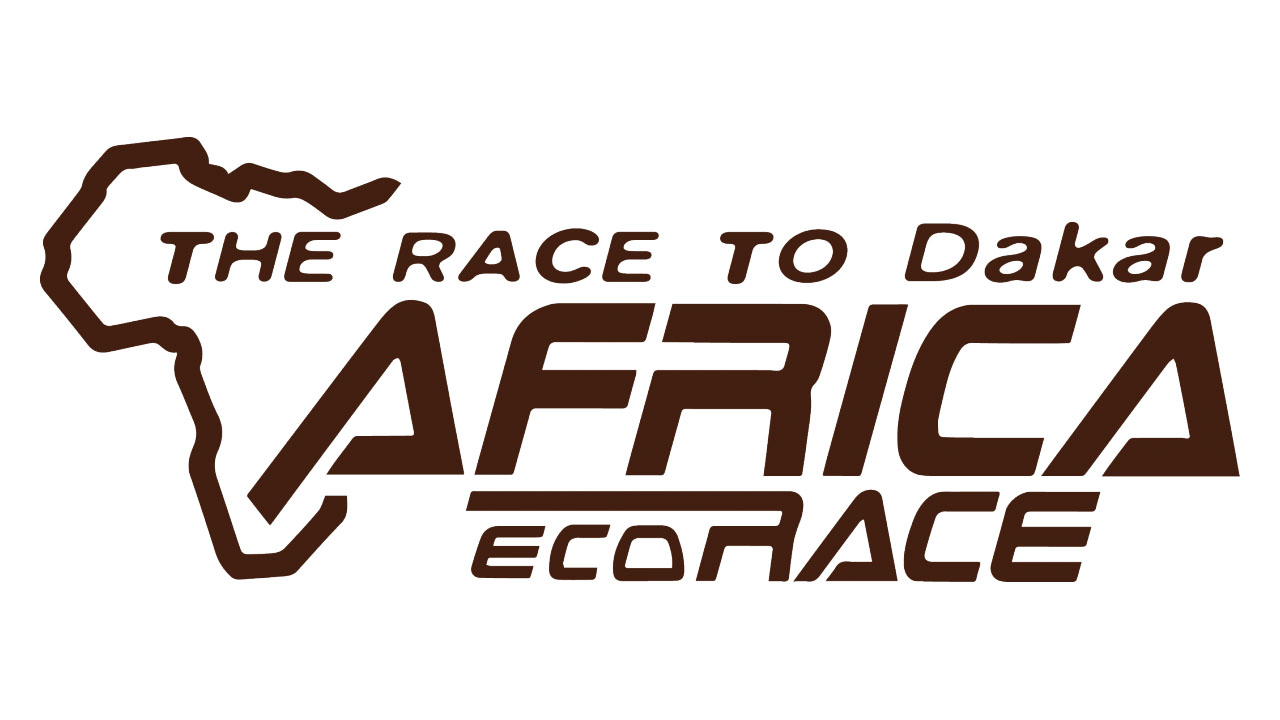
DESCRIPTION
Rally Dakar differs from other rally tournaments in its format, where the champion is determined at the finish line, based on the fastest passage of the distance. Stages - weekends not extended according to the calendar with the summation of points, these are daily races, with breaks for sleep and repairs in clearly indicated places.
Considering that it is required to drive up to 10,000 km, a significant part of which are “special sections”, and the “tracks” are famous for their complete off-road, the task for many drivers and “iron horses” becomes overwhelming.
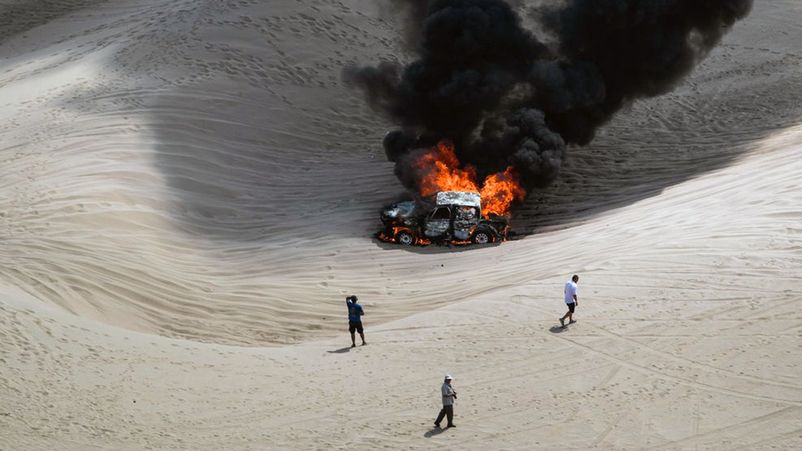
In some seasons, less than half of the starting crews finish, so it is not surprising that the race has received the status of a “survival rally marathon”. He attracts a professional racers and "amateurs" who decided to test their strength in a sporting event on the verge of possibilities. The latter, the majority are recruited, and often up to 80% of drivers do not belong to the pros. A pleasant annual tradition has become the participation of female pilots and famous people, representatives of both sports in general and show business and politics.

The organizers are responsible for technical support and security of the competitions, leading the races, equipping places for food, repairs and rest, if necessary, for mass entertainment events. It is estimated that about 1.5 tons of food is eaten and about 6 thousand liters of water are drunk during the day of the rally. Gasoline for equipment, about 15 tons for all participating crews, also goes in a “caravan” along the route, and the purchase of local fuel is prohibited. About 15-20 thousand people are responsible for the safety of the rally-raid, including employees of the host countries.
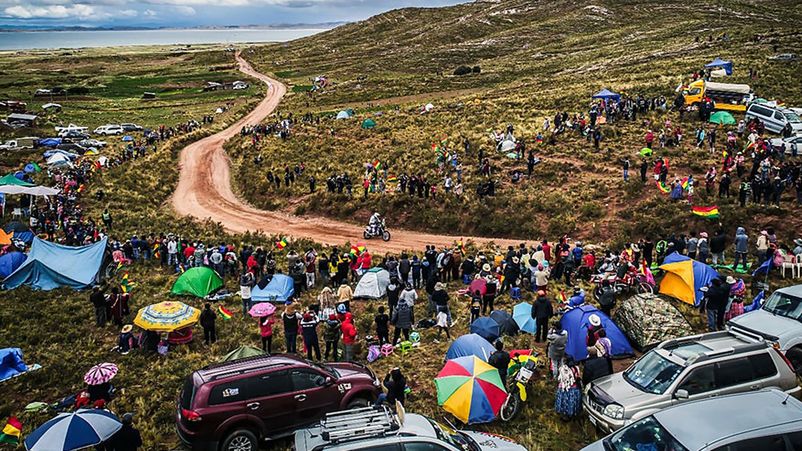
Over the decades of the Dakar, at least 13 thousand pilots managed to successfully complete the entire race, proving their high level and receiving a gold medal as an award, officially confirming their high achievement. Separately, it was calculated that more than 60% of the starting riders could not reach the finish line, leaving the race.
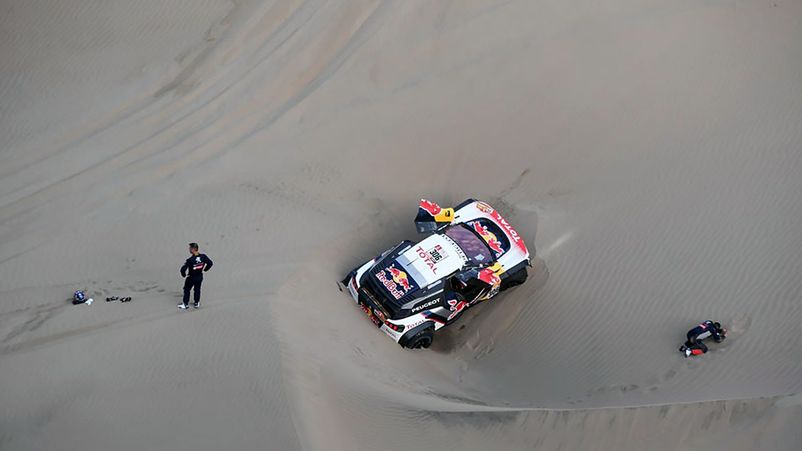
The main prize in the rally is a one-kilogram Golden Bedouin figurine, a stylistically made of gold bust of a desert dweller wrapped in traditional clothes.
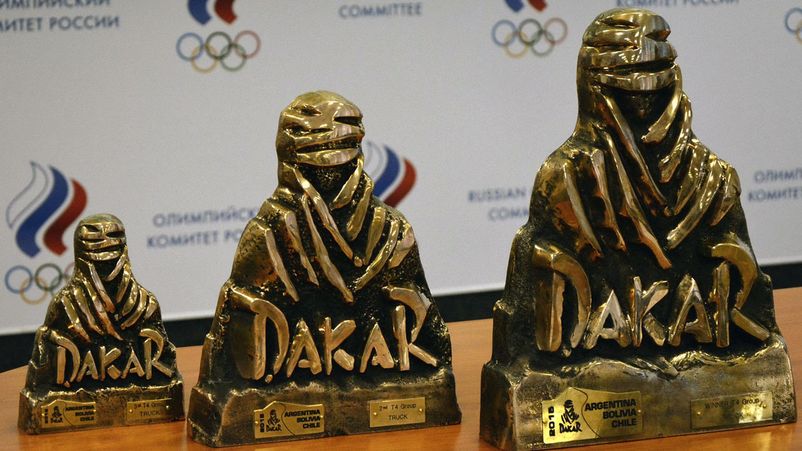
The importance of the very idea of conquering off-road is emphasized, and not the financial benefit of a place in the standings. It is also supported by motorists by submitting numerous applications for participation in each season, as a result, spending more than earning in the race.
EQUIPMENT AND CATEGORIES OF PARTICIPANTS OF THE DAKAR RALLY
Rally "Dakar" is held for 4 types of vehicles:
- motorcycles
- ATVs (since 2009)
- cars
- trucks
They are divided into internal categories with their own digital and letter numbering, depending on the degree of modifications to the vehicle, a wide range of which is allowed by the rules.
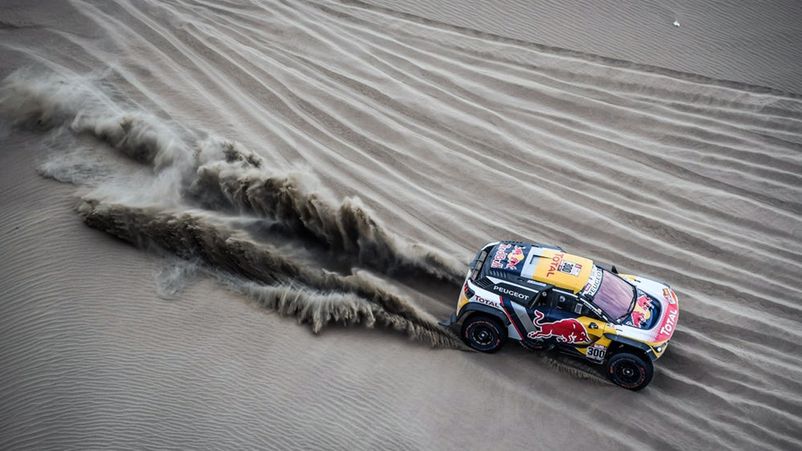
Thus, “fireballs” modified by amateurs or factory teams, and quite common vehicles found on public highways, go to the start.
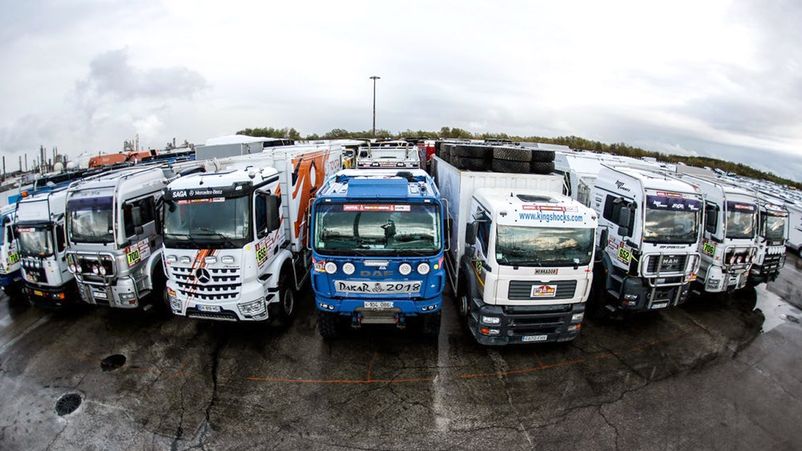
MOTORCYCLES
Production models (approved for operation on ordinary roads) with one or two cylinders and an engine capacity of up to 450 cubic centimeters, improvements and off-road preparations are allowed. They are divided into categories:
- Elite - only members of the Amaury Sport Organization participate
- Super-Production - general group of motorcyclists
- Marathon - the main condition, during the rally you can not change the key components and assemblies of motor vehicles
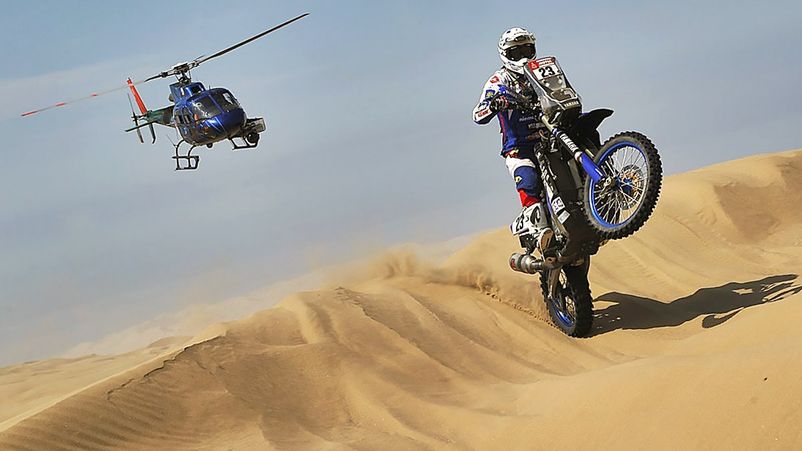
ATVs
Separated from moto, they formed two subcategories:
- Single-cylinder, with any two-wheel drive and engine up to 750 cc. cm.
- 3.2 - cylinders - 1 or 2, drive - allowed and "full", engine - up to 900 "cubes"
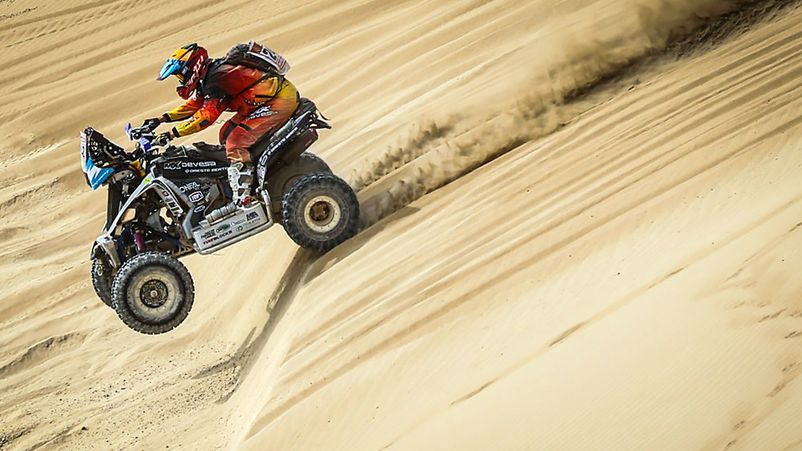
CARS
Vehicles up to 3.5 tons in weight compete in three classes:
- T1 - "serial" SUV models that have been modified and tuned
- T2 - "factory" cars, without special modifications
- Open - "buggies" and other equipment that falls under the weight limits
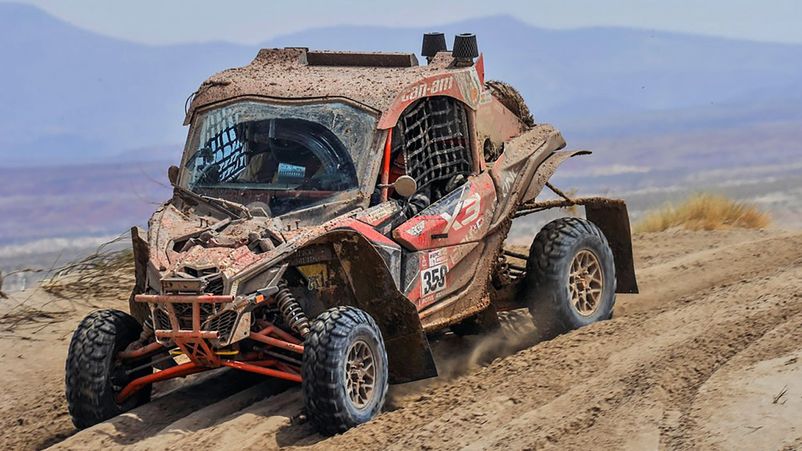
TRUCKS
The most diverse group, and one of the categories does not even take part in the medal standings:
- T4.1 - trucks must be "factory" sample, without changes and improvements
- T4.1 - finalized and modified representatives of the class
- T4.2 - "techies" of support services, as fast and improved as possible, but aimed not at winning the race, but at helping other crews

- T5 - trucks of the technical divisions of the teams, "tournamentally" not participating in the rally-raid

REGULATIONS AND FEATURES OF NAVIGATION ON THE DAKAR RALLY
According to the regulations, the distance of the Dakar Rally is divided into daily stages of 700-900 kilometers, including "liaisons" (usually roads and public paths) leading to or from "special sections". Credit points are awarded for the speed and correctness of passing the latter, being calculated after each race and adjusting the position of the participants in the standings.
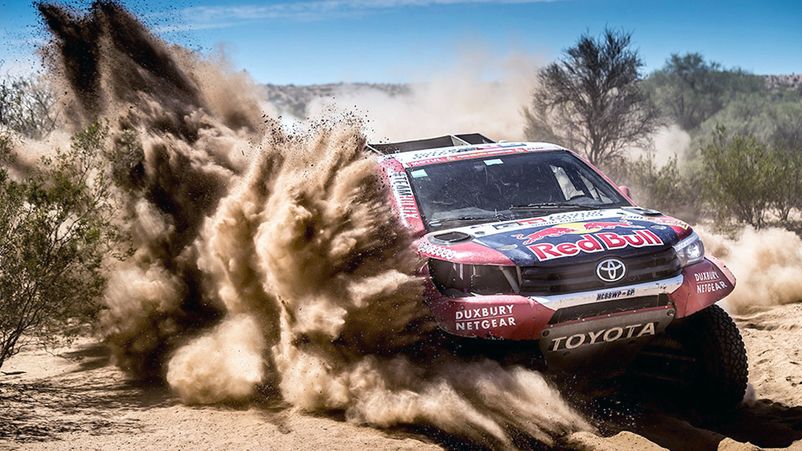
Depending on the place, the position of the drivers at the start of the next day is determined, where the system of temporary odds is used. Racers of the Dakar Rally will start individually, at 2-minute intervals, from motorcycle categories to cargo classes. From the beginning of the second ten of the tournament, the time between the starters is reduced to 1 minute.

The size of the handicap of all stages is unchanged and cannot be increased or decreased, in contrast to the "test" time of passing the "special stage". It can be changed by the organizers by imposing penalty minutes for errors on the course, "refueling" at local gas stations and assistance in navigation. Time can also be "subtracted" (compensated) in case of force majeure. For example, if a race car driver stopped to help a broken opponent, as each participant is required to do according to the rules.
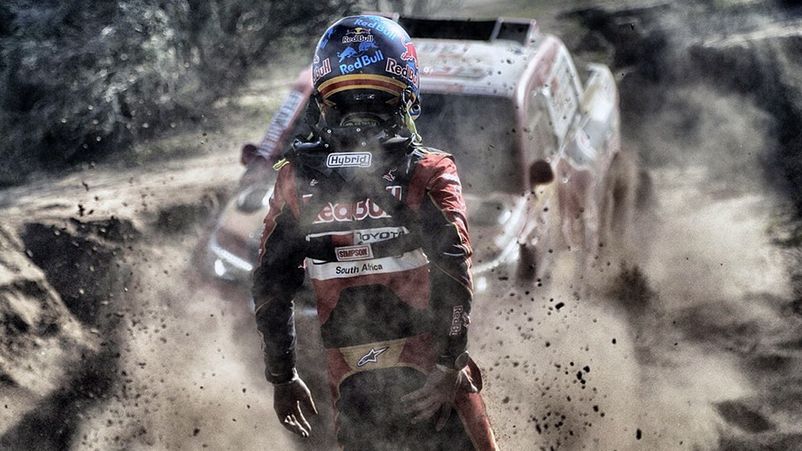
It has its own characteristics and navigation - the route of the entire rally-raid is kept secret. The crews before the race itself receive information about the next stage, moreover, only data of landmarks and control points (sometimes combined with mobile refueling and technical assistance stations) without indicating their GPS coordinates.

Movement along the route to the Dakar rally is carried out using the Unik II navigation device, which shows the direction to the next checkpoints. The difficulty is that the rider must be within a certain radius of them in order for the device to catch the signal. In emergency cases, with the help of a special code, you can open a GPS-map with the location of all "test" points, but "hints" are punished with a time penalty.
The organizers of the Dakar Rally monitor the fulfillment of navigation requirements by the participants using the IriTrack GPS tracker, tracking their location in real time. It is also used for emergency communication with the crew, in particular in emergency and especially dangerous situations. Secret control points are also used at the "special stages", fixing the appearance of each athlete.
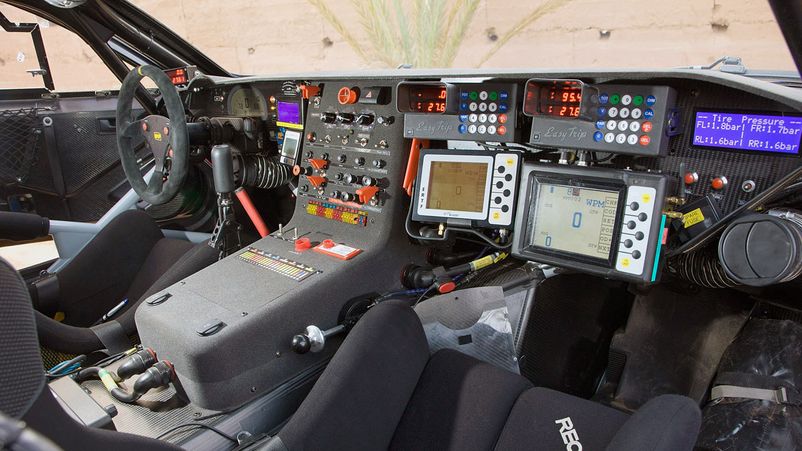
RUSSIA IN THE DAKAR RALLY
Russian riders began to compete at the Paris-Dakar in 1991, immediately winning silver and bronze on the truck podium. The KAMAZ-master team, created in 1988, which had practically no experience in international performances and was nicknamed the “Blue Armada” by the fans for the color scheme of the cars, distinguished itself. The first "gold" of the rally-raid was won in 1996 by Viktor Moskovskikh on the KamAZ-49252, which brought two more victories, but already under the control of Vladimir Chagin. The pilot from Perm subsequently became a record holder, having won a total of 19 champion titles in the cargo class - in 2000, 2002-2004, 2006, 2010-2011б 2013-2015, 2017-2022.
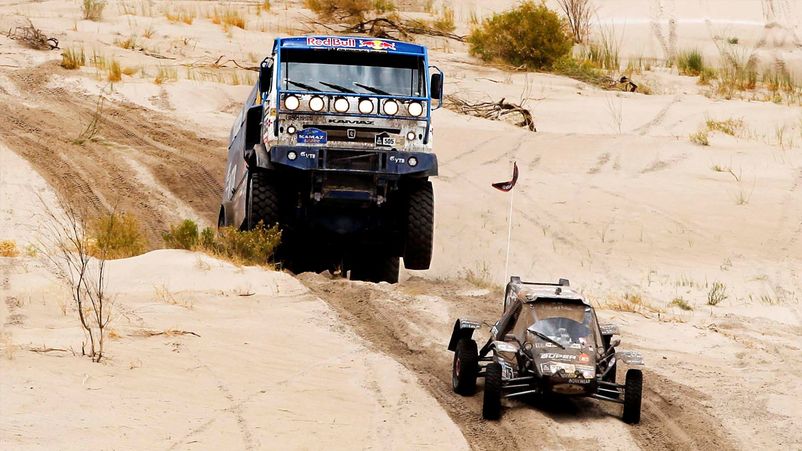
In total, the KAMAZ-master team has more than 19 Dakar gold medals, 16 of which were obtained after 2002. The history of the race knows no other such total dominance of one brand of car. The reorganization of the team from Russia, which rejuvenated the squad after Chagin ended his career, did not help the rivals either. Eduard Nikolaev, who became a 3-time rally champion, showed himself to be the leader of young pilots.
LEGENDS OF DAKAR
In addition to KAMAZ, in different years the Paris-Dakar was periodically dominated by several automakers that produced especially successful cars, brought almost to perfection by mechanics. It is possible to note 4 championships in a row, from 2012 to 2015, of the BMW concern and its British representative MINI All4 Racing, which exhibited 11 cars that successfully reached the finish line.
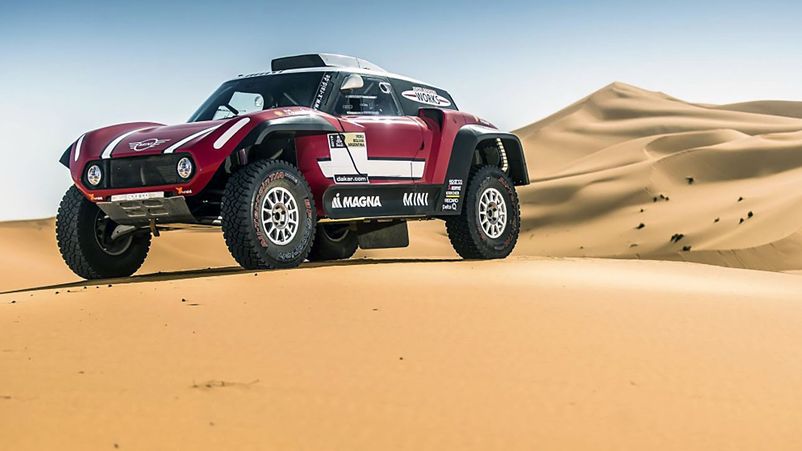
Citroen, whose ZX sports prototypes won in 1991 and 1994-1996. The French Peugeot took gold four times in a row on the 205 and 405 models in 1997-2000, but stopped paying enough attention to the rally raid from victories in the 2000s, leaving for a long time in classic auto racing and triumphantly returning in 2016 with Peugeot 2008 DKR. In 2017 and 2018, the 3008 DKR brought the auto giant's total wins to seven.
Mitsubishi Pajero is considered to be the most titled Dakar off-road vehicle, the modifications of which brought the manufacturer 12 championship titles.
The first "golden" season was 1985, and in 1992-1993 the Japanese took away the titles from Citroen, which was considered the favorite. Complete dominance began in 1997 and ended in 2008, with the cancellation of the Africa Rally. For eleven years, the car became the best in its class 9 times, losing in 1999 and 2000.

The Austrian KTMs have kept everyone away from the championship title since 2001, having won it 17 times in a row. Neither Yamaha (9 awards of the highest standard), nor BMW and Honda, 6 and 5 titles respectively, can compete with them. However, Yamaha is making headway in a relatively new ATV category, having won every season since 2009.
DAKAR INCIDENTS
The status of "Dakar" as a "survival marathon" has a very real justification - every season there are new incidents and tragedies. According to some reports, over the years of the event, about 70 people died - participants, technical staff and spectators. The death rate among motorcyclists is especially high.
Events at the rally sometimes affect politics, as in 1982, when Mark Thatcher, the son of the Iron Lady, British Prime Minister Margaret Thatcher, disappeared in the desert. He, the navigator and the mechanic were looking for "the whole world" for 6 days. The event received a huge public outcry, the military was involved, whose plane found the crew 50 km from the highway. All were safe and sound.

In 1986, the Paris-Dakar took the life of its founding father, Thierry Sabin, who died in Mali in a helicopter crash during a sandstorm. The pilot, two representatives of the media and a guest of the competition, French singer Daniel Balavoine, crashed with him. But the name of the ex-motorcycle racer forever remained in history, and his undertaking was successfully continued.
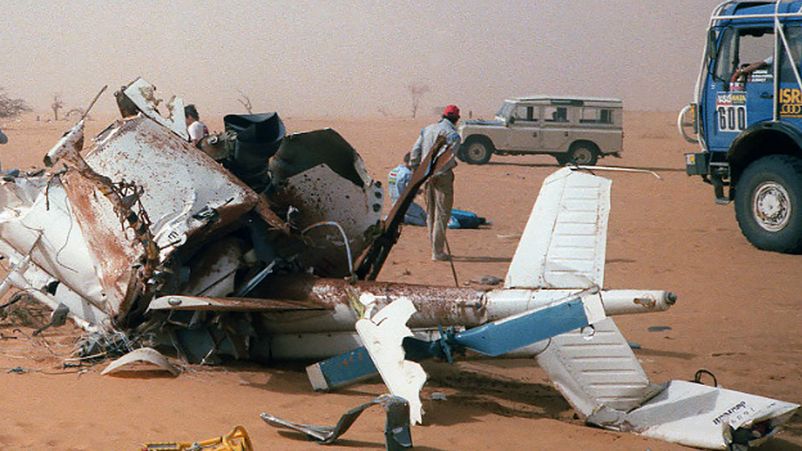
A series of tragedies stands out in the 1988 season, which brought the death of 6 people: three racers crashed on the stages, a Malian girl was hit by another driver, and a team of videographers - a mother and daughter in Mauritania. In addition, the participants were accused of organizing the fire and the ensuing panic, during which three people died.
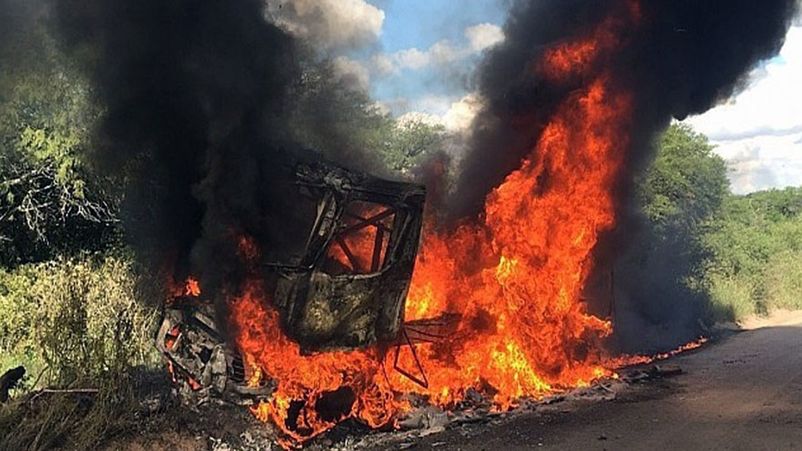
Five people, including a 5-year-old girl from Senegal crushed by a maintenance truck, died in 2005. Among them is Fabrizio Meoni, an Italian motorcycle racer, two-time rally-raid champion. After terrorist killings and statements by al-Qaeda supporters, and the transfer of Dakar to South America, crossed the ocean and "survival status". The first victim of the new-old rally already at the second stage of 2009 was the Frenchman Pascal Terry - the body of the pilot was found only three days later. In 2010, during the starts of the race day, a spectator was crushed to death, and in 2012, Jorge Boero, a motorcyclist from Argentina, crashed.
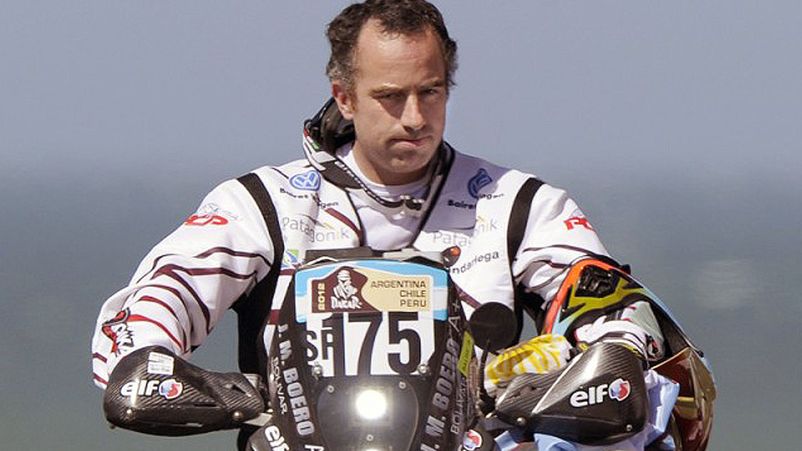
Since then, the Dakar has claimed several more motorcyclist lives.
In 2013, near the border of Peru with Chile, a head-on collision between a Land Rover support crew and two local taxi cars killed two strangers, and seven people ended up in a clinic with various injuries. In the same year, and also head-on, Thomas Bourgin, a 25-year-old motorcyclist from France, collided with a Chilean police car. The debutant of the rally-raid did not survive.

The third stage of the 2015 season also ended in death, when the body of Michal Hernik, a motorcycle racer from Poland, was discovered. His bike had no visible damage from the accident, the driver himself was without a helmet and signs of violence, and an autopsy showed dehydration as the cause of death. Also, in 2020, motorcyclist Paulo Gonçalves died, having received an injury incompatible with life when falling from a motorcycle.
RALLY DAKAR ON TV
Many articles have been written about the most famous rally raid and even more reports have been shot, riders give interviews, and viewers share their impressions. There is a lot of video material, from which one can single out the “documentary” Race to Dakar (“Forward to Dakar!”) Filmed by Discovery Channel in 2006, where the main character was the British actor Charlie Boorman in a BMW F650. It is considered the best and has an IMD rating of 8.2 points, surpassing even some Hollywood blockbusters.
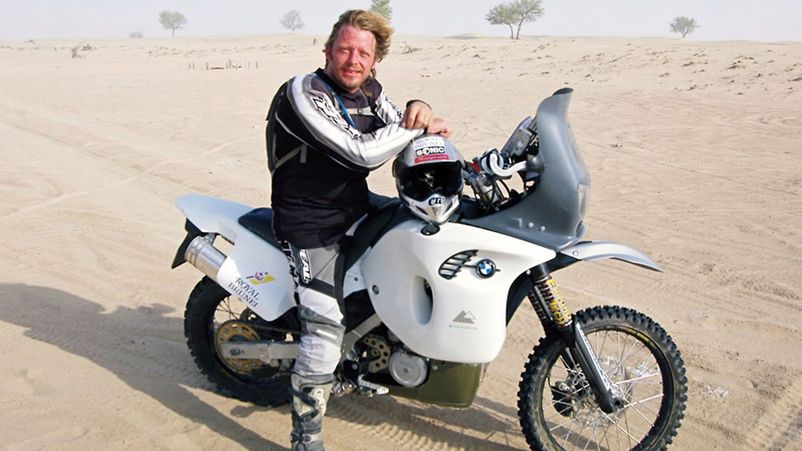
The documentary (watch here) of 7 episodes is considered a must-see for those wishing to take part in the rally and tells about all the stages of preparing a pilot for the rally, starting with medical tests and paperwork. He shows the viewer the events from the "first person", explaining all the subtleties and nuances of the race, showing the complexity of the route, passing through deserts and stone impassability under 50-degree heat, followed by sub-zero night temperatures.


